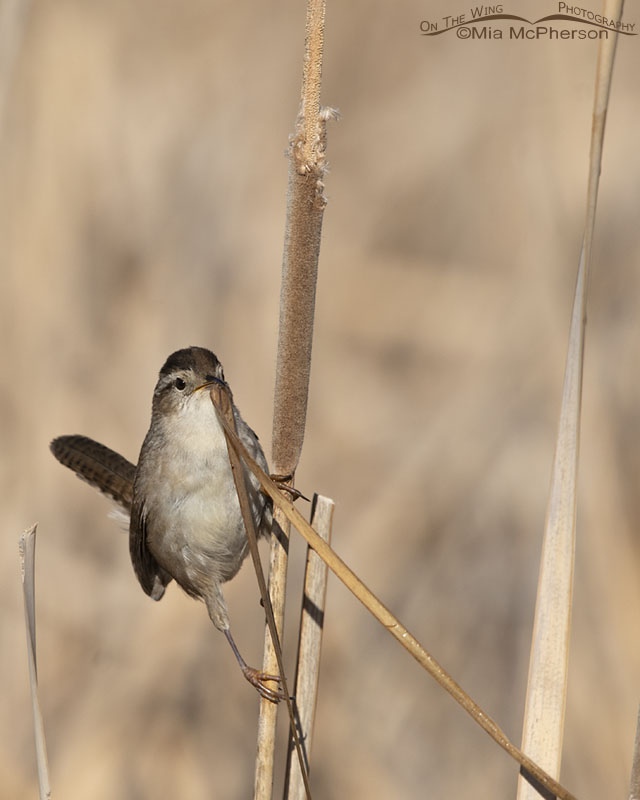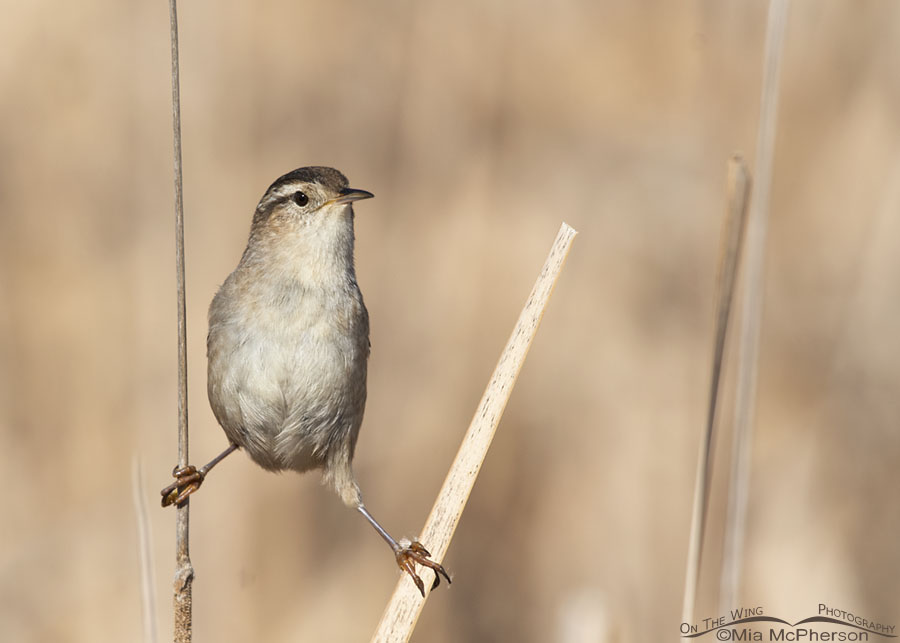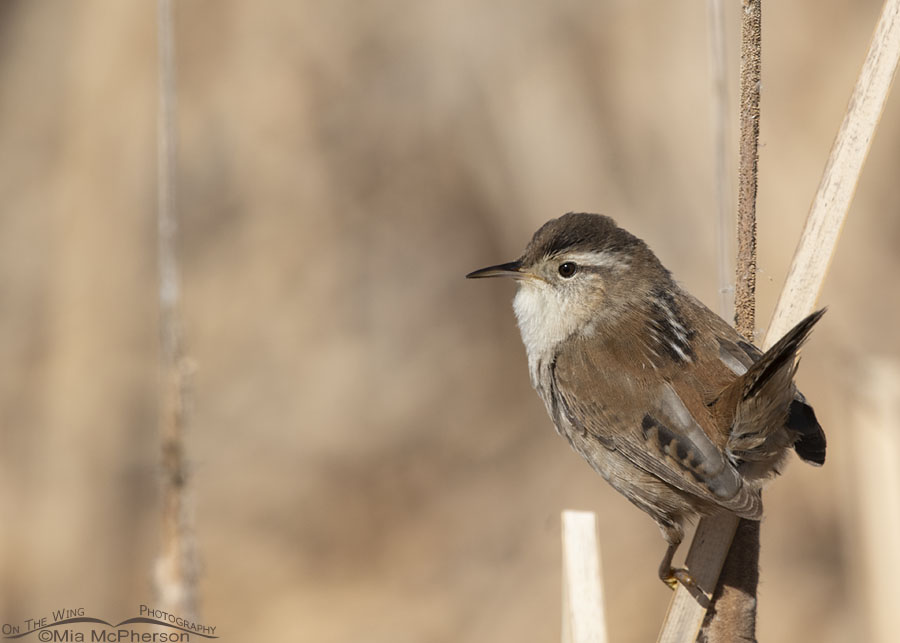 Marsh Wren male with nesting material – Nikon D500, f7.1, 1/2500, ISO 400, Nikkor 500mm VR with 1.4x TC, natural light
Marsh Wren male with nesting material – Nikon D500, f7.1, 1/2500, ISO 400, Nikkor 500mm VR with 1.4x TC, natural light
I was looking through photos that I took nearly two years ago today and realized it is already nesting season for Marsh Wrens in northern Utah. On March 27, 2018 I spent the morning at Bear River Migratory Bird Refuge and although I took photos of several species of birds there that day I spent the most time photographing male Marsh Wrens singing and gathering nesting materials on their breeding territories.
Only male Marsh Wrens sing and build nests so I have based my gender ID for these wrens from my observations.
 Marsh Wren male on his territory – Nikon D500, f7.1, 1/1600, ISO 400, +0.7 EV, Nikkor 500mm VR with 1.4x TC, natural light
Marsh Wren male on his territory – Nikon D500, f7.1, 1/1600, ISO 400, +0.7 EV, Nikkor 500mm VR with 1.4x TC, natural light
By using a vehicle as a mobile blind I was able to photograph the wrens as they sang, searched for nesting materials, defended their breeding territories and built their nests from a distance.
The male Marsh Wrens were very keen on chasing away any other males that came into their territory. I did observe a wren come into this male’s territory that he didn’t chase off, I think it was safe to presume that wren was a female but she didn’t come out into the open enough for me to get photos of her.
 Male Marsh Wren during nesting season – Nikon D500, f7.1, 1/2000, ISO 400, Nikkor 500mm VR with 1.4x TC, natural light
Male Marsh Wren during nesting season – Nikon D500, f7.1, 1/2000, ISO 400, Nikkor 500mm VR with 1.4x TC, natural light
Over the years I have found that Marsh Wrens are easier to photograph during the nesting season because the males spend more time high up on cattails, rushes, and phrags singing to attract mates. Male Marsh Wrens are tiny but fierce and will defend their breeding territory aggressively. They sing during the day and sometimes during the night. I’ve never heard them singing at night but I’d love to hear that.
This morning there is a skiff of fresh snow on the ground again with clouds all over northern Utah or I’d hop in my Jeep and head to the refuge. I am anxious to get back there and enjoy seeing and hearing these tiny marsh residents as they begin their nesting season while I am still able to.
Currently the auto tour route at Bear River Migratory Bird Refuge is still open during this Covid-19 pandemic crisis although the visitor center is closed. I hope that everyone who visits the refuge is washing their hands often, maintaining social distancing, and stays safe.
Life is good.
Mia
Note: These photos were taken from inside a vehicle being used as a mobile blind with sufficient distance between the birds and the vehicle so the wrens went about their business naturally. The comfort, safety and well being of the birds is always more important to me than the photos, especially during the nesting season.
Ethics on photographing nesting birds:
- Do not approach too closely;
- If the birds show any sign of distress, back away;
- Don’t trim leaves, twigs or branches to get a clearer shot, you may inadvertently attract predators or cause the eggs/chicks to over heat;
- Follow local, state and federal guidelines concerning nesting birds;
- Don’t harass the birds to get an action shot;
- Don’t stay a long time with nesting birds or chicks, that disrupts their normal behavior;
- Always put the safety and comfort of the birds first.
For more information on the ethics of photographing nesting birds or chicks check out the Principles of Birding Ethics published by the American Birding Association.


These are the kind of shots I absolutely love! Great composition; rich in color and detail. Marsh Wrens are beautiful. Thanks Mia.
Parks are closed here. although you can drive through them on the main roads. I feel a little sad about that, though agree with the reasons. Remember don’t speed, keep all of us, including the wildlife safe. Pretty wrens, neat to see even the smaller birds pulling on grasses for their nests.
Beautiful things.
I hope you can get back into the field again. Soon.
Lovely photos.
I have sat and watched a marsh wren weave it’s nest. It was amazing how long a strand of reed it can carry and weave. It seemed like it took a tremendous amount of energy.
All three shots are fabulous! 🙂 I especially like the cheeky “tail-up” pose in the last one. Thank you for including their song too. I don’t know why, but I was expecting a higher-pitched song from these little guys. For some reason, their song makes me think that they’re scolding something. It also reminds me of rodent chatter.
Love the photos! When spending time in Illinois during the warm months I really enjoyed these energetic sprites. Here in south Florida I have recorded them singing a couple of times in the past two weeks, the last time on March 20. None since, so they are now probably headed north.
These feisty little guys are one of my favorites. I’ve spent more time and pixels trying to capture these ever-moving birds than I’d like to admit, but it’s always fun. These are lovely images, and they gave me a big smile and hopes for more time wasting pixels and laughing while trying to get a decent shot.